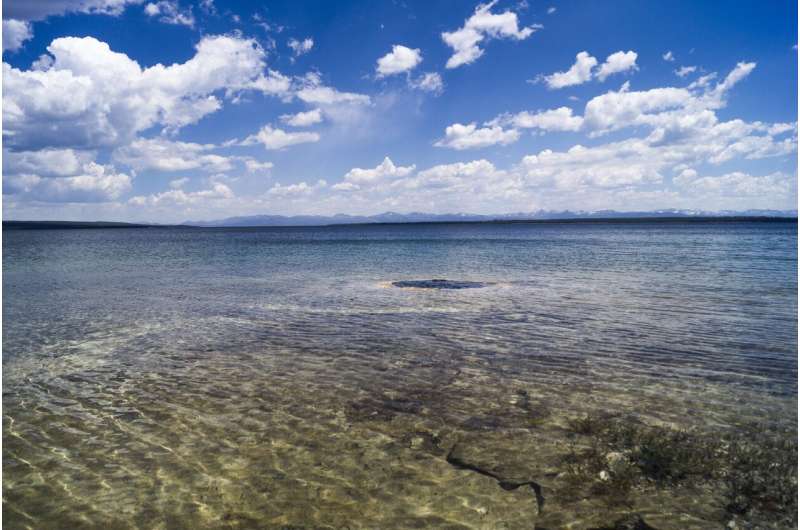This article has been reviewed according to Science X's editorial process and policies. Editors have highlighted the following attributes while ensuring the content's credibility:
fact-checked
peer-reviewed publication
trusted source
proofread
Silica may influence microbial communities in hydrothermal fields

In recent years, the hydrothermal alteration of olivine has attracted the attention of geologists, biologists, and chemists. It significantly influences the physical and chemical properties of the oceanic lithosphere, and it plays an important role for the recycling of volatiles (such as water and carbon) in subduction zones.
In particular, hydrothermal alteration of olivine produces hydrogen (H2) that is capable of supporting microbial communities in hydrothermal fields. However, the controlling factors for hydrogen production and reaction rates during olivine hydrothermal alteration remain poorly understood.
Previous experiments were performed mostly with olivine and pure H2O or saline solutions as starting reactants. Silica is an important component of geological fluids.
Olivine in natural geological settings is commonly associated with silica-bearing minerals such as plagioclase, pyroxene and microcrystalline silica. The coupling between the rates of olivine hydrothermal alteration and hydrogen formation in silica-bearing systems remains poorly constrained.
A team from South China Sea Institute of Oceanology, Chinese Academy of Sciences studied the reaction of olivine with silica-bearing fluids at 300°C‒515°C and 3.0 kbar. Silica greatly influences the reaction pathways, reaction rates, and hydrogen production. The paper, "The influence of silica on reaction rates and molecular hydrogen (H2) generation during olivine hydrothermal alteration," is published in the journal Science China Earth Sciences.
With the addition of 10‒20wt% silica, the rates of olivine hydrothermal alteration at 300°C and 3.0 kbar decrease greatly compared to the kinetics in silica-free system, and hydrogen production becomes around 1‒2 orders of magnitude lower.
At higher temperatures (400°C‒500°C and 3.0 kbar), the rates of olivine hydrothermal alteration increase greatly with the presence of silica, which may be due to a dramatic decrease in Gibbs energies of olivine hydrothermal alteration. The effect of silica on hydrogen production at 400°C‒500°C and 3.0 kbar is negligible.
Hydrogen is capable of supporting microbial communities in hydrothermal fields. The experiments suggest that silica-bearing fluids possibly influence microbial ecosystems in hydrothermal fields.
More information: Ruifang Huang et al, The influence of silica on reaction rates and molecular hydrogen (H2) generation during olivine hydrothermal alteration, Science China Earth Sciences (2023). DOI: 10.1007/s11430-023-1172-9
Journal information: Science China Earth Sciences
Provided by Science China Press




















